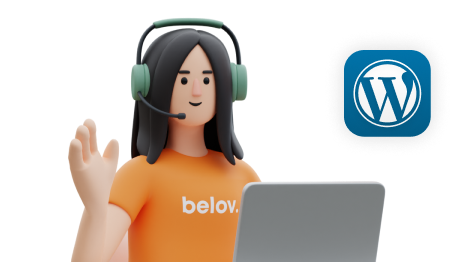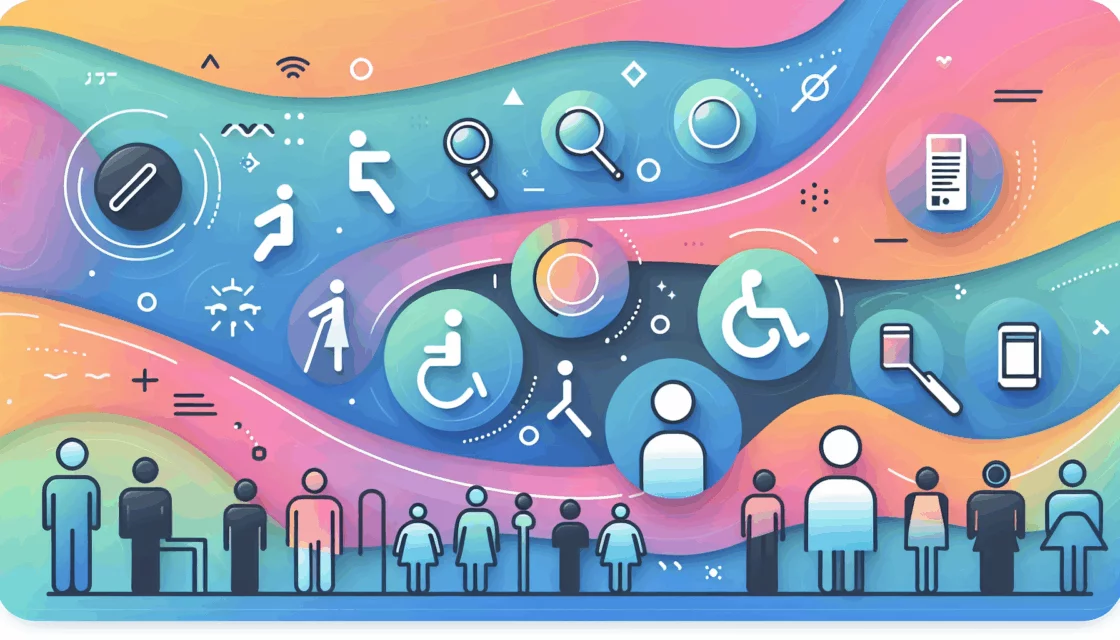
In today’s digital landscape, creating websites that are accessible to everyone is not just a moral imperative, but also a legal requirement. Web accessibility ensures that all users, regardless of their abilities, can navigate and engage with your digital spaces effortlessly. At Belov Digital Agency, we prioritize web accessibility and inclusive design, helping businesses achieve ADA compliance.
Crafting an Inclusive Web Experience
Principles of Accessibility: The POUR Acronym
To ensure that your website is accessible, it’s essential to understand the POUR acronym, which stands for Perceivable, Operable, Understandable, and Robust. This framework is derived from the Web Content Accessibility Guidelines (WCAG) by the World Wide Web Consortium (W3C) and is the basis for many national accessibility laws.
- Perceivable: Ensure all content is perceivable by users with different senses. This includes providing alternative text (alt text) for images so screen readers can interpret them for visually impaired users.
- Operable: Make sure the website can be operated using various input methods, such as a keyboard or voice commands. This ensures users without a mouse can navigate easily.
- Understandable: Ensure the website is easy to understand, with consistent navigation and clear language.
- Robust: Ensure content is robust and can be interpreted by a wide range of browsers and assistive technologies.
For more on implementing these principles, visit W3C’s Accessibility Introduction.
Implementing Accessibility Features
Real-World Tips for Enhanced Accessibility
To improve accessibility, consider the following actionable tips:
- Alternative Text for Images:
- Use descriptive alt text for all images to help screen readers convey the content.
- Tools like Recite Me can assist in identifying inaccessible areas.
- Keyboard Navigation:
- Ensure all interactive elements can be accessed using a keyboard.
- Try navigating your site using only the tab key to identify any issues.
- Color Contrast and Zoom:
- Use sufficient color contrast to help users with vision impairments (WCAG recommends a contrast ratio of at least 4.5:1).
- Ensure content can be zoomed up to 200% without losing functionality.
- Accessible Multimedia:
- Include captions and transcripts for videos and audio to aid users with hearing impairments.
- Ensure media players support closed captions and can be operated without a mouse.
- Responsive and Accessible Forms:
- Clearly label all form fields and provide instructions for completion.
- Use HTML tags
For testing color contrast, tools like the WebAim Contrast Checker are invaluable.
The Job Accommodation Network (JAN) provides guidance on accessible multimedia.
Implementing accessibility isn’t a one-time process; it requires ongoing monitoring and updates. Tools like UserWay and Recite Me offer automated audits to identify potential accessibility issues.
Real-World Examples and Case Studies
Real-world examples highlight the importance of accessibility:
- Microsoft’s Accessibility Efforts: Microsoft has shown a strong commitment to accessibility by incorporating features like screen reader support and high contrast themes into their products.
- H&M Accessibility Initiative: H&M has made efforts to improve web accessibility for users with disabilities, ensuring better navigation and greater inclusivity on their website.
To learn more about Microsoft’s commitment to accessibility, visit their Microsoft Accessibility page.
Leveraging Technology for Accessibility
Hosting Solutions for Accessible Websites
Choosing the right hosting solution can also impact your website’s accessibility. For instance, using a fast and reliable host like Kinsta ensures that your site loads quickly and is responsive across different devices.
Web Development Platforms
Platforms like WordPress offer a wide range of accessibility-focused themes and plugins, making it easier to create accessible websites.
For more on using WordPress for accessibility, check out WordPress Accessibility Best Practices.
Conclusion and Future Steps
Incorporating accessibility into web design is crucial for creating inclusive digital spaces that cater to all users. By following the POUR principles and implementing actionable tips, businesses can not only meet legal requirements but also enhance their overall user experience.
To ensure your website is fully compliant and provides a seamless experience for all users, contact us at Belov Digital Agency. We specialize in crafting accessible digital solutions that drive engagement and compliance.
Remember, an accessible website is not just a moral obligation; it’s a business imperative in today’s digital world. By integrating these practices, you can ensure your website is ready for today’s diverse audience.













